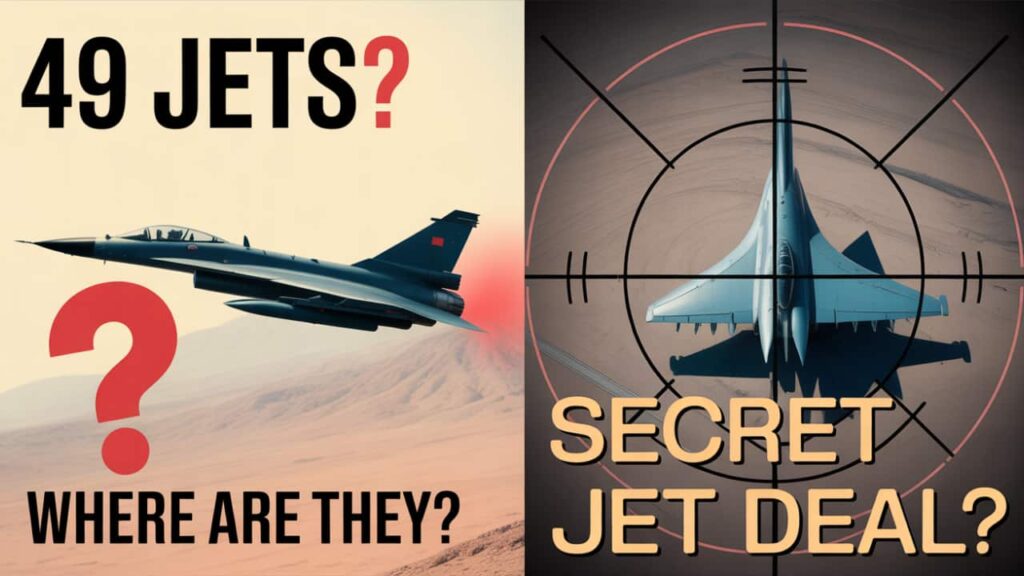The Iran J-10C deal has stirred headlines across the Middle East and beyond. On paper, the acquisition of 49 advanced Chinese multirole fighter jets would mark a historic modernization of Iran’s aging air force. But as regional analysts and defense experts begin dissecting the announcement, one troubling reality stands out: there is no clear evidence that these jets actually exist in Iranian hands.
Despite reports from Iranian state media claiming the deal has been finalized, no images, deliveries, or official statements from China have confirmed the arrival of any aircraft. The Iran J-10C deal, at this stage, appears to be more symbolic than strategic—raising more questions than it answers.
Table of Contents
The Context: Iran’s Airpower Struggles and Failed Russian Support
To understand the urgency behind the Iran J-10C deal, one must first examine Iran’s recent setbacks. Since 2023, Tehran has been awaiting the delivery of 50 Russian Su-35 fighter jets. The Kremlin delivered just four before suspending further shipments due to its escalating war in Ukraine. With its primary supplier disengaged and its air defense infrastructure recently exposed during Israeli-American strikes, Iran was left scrambling for alternatives.
This is where China enters the frame. The Chengdu J-10C, a modern 4.5-generation fighter, presents itself as a viable (if less advanced) replacement. But unlike Russia, China has not publicly acknowledged any sale of jets to Iran, fueling skepticism around the legitimacy of the Iran J-10C deal.
China’s Silence and the Missing Jets
China’s role in the Iran J-10C deal is crucial. Beijing is known for using defense exports to showcase its growing global influence, especially in sensitive geopolitical zones like the Middle East. However, in this case, China has issued no official statement confirming the sale or delivery of J-10Cs to Iran.
Satellite imagery shows no recent changes to Iranian airfields. Defense analysts have yet to detect any new aircraft in Tehran’s military arsenal. If the jets were delivered, it would be expected that the Iranian regime would showcase them as a victory. Their absence suggests either the deal is still being negotiated—or it never truly existed.
Financial Hurdles: The Oil-for-Jets Barrier

The financial structure of the Iran J-10C deal also raises red flags. Due to heavy U.S. sanctions, Iran has limited access to foreign reserves and cannot easily engage in hard currency transactions. Historically, Iran has offered oil in barter for military hardware—a model that previously failed during J-10C negotiations in 2022.
China, on the other hand, demands upfront payment in convertible currency for its advanced systems. This fundamental mismatch in financial expectations was a key reason why earlier talks collapsed. Analysts suggest that unless Iran can find a workaround or a third-party financier, the Iran J-10C deal may never progress beyond press statements.
Military Impact: Would the J-10C Change the Balance?
Assuming the Iran J-10C deal were real and the jets were delivered, would it be a game-changer?
Not necessarily. While the J-10C is an agile and well-equipped fighter—featuring AESA radar, thrust-vectoring engines, and advanced electronic warfare—it still falls short of matching fifth-generation aircraft like the Israeli F-35I or U.S. F-22. Moreover, integrating such complex systems into Iran’s outdated military structure would take years, requiring training, logistical overhauls, and tactical restructuring.
Thus, even a confirmed Iran J-10C deal would not immediately shift regional air superiority.
Strategic Motivations: Propaganda or Projection?
Given the lack of hard evidence, many experts now see the Iran J-10C deal as part of a broader psychological strategy.
Following precision strikes that exposed critical vulnerabilities in its defense grid, Iran faces immense internal and external pressure. Announcing a bold acquisition of modern fighter jets allows the regime to project strength—regardless of whether the deal has materialized. This propaganda tactic serves both domestic audiences demanding better protection and adversaries watching for weakness.
As one analyst noted:
“Iran’s greatest weapon right now may not be a fighter jet—but the idea of one.”
Global Reactions and Intelligence Assessments
Western governments remain unconvinced. Neither the U.S. Department of Defense nor Israeli intelligence agencies have confirmed the Iran J-10C deal as legitimate. Secretary of Defense Pete Hexath remarked:
“Iran’s military remains a generation behind. Their announcements don’t reflect battlefield reality.”
Even the G7’s recent Middle East statement focused on nuclear diplomacy—not airpower upgrades—implying that world powers are not giving weight to the jet claims.
Conclusion: A Deal Shrouded in Doubt
At this stage, the Iran J-10C deal is less a milestone in military development and more a case study in strategic posturing. Until China confirms the sale, until jets are visible on Iranian tarmacs, and until global watchdogs validate the claims, this deal will remain in the realm of speculation.
What’s clear is that Iran is seeking options, influence, and visibility on the world stage. Whether it achieves that through actual jets or effective propaganda remains to be seen.
✅ FAQ: Iran J-10C Deal
❓Has Iran received any J-10C fighter jets from China?
No credible evidence or confirmation from China or independent sources supports this claim.
❓What is the J-10C and why does Iran want it?
The J-10C is a 4.5-generation Chinese fighter jet offering radar stealth, agility, and advanced avionics—making it a considerable upgrade for Iran’s outdated air force.
❓What’s stopping the Iran J-10C deal?
Sanctions, payment barriers, and a lack of confirmation from China all point to the deal being unfinalized or possibly fabricated.
❓Would the J-10C shift military power in the region?
Unlikely. While a technical upgrade, the J-10C is no match for fifth-generation fighters like the F-35, and Iran would need years to integrate them fully.
🔗 Stay informed with verified geopolitical insights. Visit:
👉 www.documentarytimes.com
Install the latest 1WIN APK for full access to crash games, slots, and betting markets.